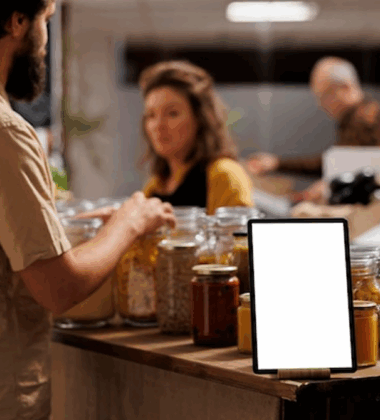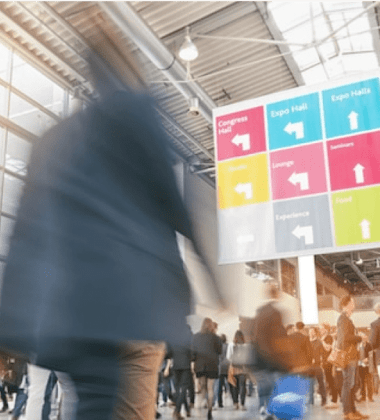The Global Products Expo, scheduled for June 26–28, 2025, at the New Jersey Expo Center, is set to become one of the most impactful food and beverage trade events of the year. It’s not just about showcasing products—it’s about crafting an experience that draws in the right people, sparks interest, builds trust, and turns connections into conversions.
But here’s the secret: Successful exhibitors know that effective trade show performance isn’t only about the product—it’s about convention psychology. Understanding how people think, behave, and make decisions at trade shows can be the game-changer that sets your booth apart.
Whether you’re a first-time exhibitor or a seasoned pro, this guide will walk you through proven psychological principles that maximize trade show engagement, create memorable brand experiences, and drive real ROI.
Why Convention Psychology Matters
Convention psychology refers to the study of human behavior within the context of trade shows, expos, and conferences. It explores how layout, lighting, color, sound, social cues, incentives, and communication all influence how attendees engage—or disengage.
In highly competitive environments like the Global Products Expo, where hundreds of exhibitors compete for attention, using psychological cues strategically can:
- Increase booth traffic
- Improve lead quality
- Boost brand recall
- Strengthen customer trust
- Encourage post-event action
1. Leverage the Primacy Effect: First Impressions Shape Everything
Visitors form an impression within 7 seconds. According to trade show psychology, this “primacy effect” means your initial presentation heavily influences attendees’ perception of your brand.
Pro Tips:
- Use clean, premium booth design that aligns with your brand identity.
- Place key messaging (taglines, offers) at eye level.
- Choose calming or confidence-evoking colors (blues, greens, neutrals) to establish credibility and professionalism.
2. Use Anchoring to Frame Perceived Value
In behavioral economics, anchoring refers to the tendency to rely heavily on the first piece of information offered. If you lead with premium features, awards, or pricing tiers, your product appears more valuable.
Examples:
- Highlight a high-end product first, then present your regular options as affordable alternatives.
- Display media mentions or awards prominently at the booth entrance.
3. Appeal to Multiple Senses to Create Immersive Brand Memory
Trade shows overload attendees with information. The brain retains multisensory experiences far better than visual ones alone.
Apply This:
- Combine visual displays with tactile experiences—let people touch, taste, or sample.
- Use soft background music that matches your brand tone.
- Incorporate subtle scents or textures that create an emotional anchor to your product.
This not only builds brand recall but enhances emotional engagement, a critical component in audience decision-making.
4. Maximize the Power of Reciprocity
Want people to stay longer, engage more deeply, and remember your brand? Give something of value first. It taps into a psychological need to reciprocate.
Ideas:
- Offer free samples, exclusive content, or instant consultations.
- Create value-driven lead magnets (e.g., a free whitepaper on “2025 Food Packaging Trends”).
When attendees feel they’ve gained something useful, they’re more likely to engage authentically and give you their contact info.
5. Scarcity & FOMO Drive Action
Psychologically, we assign more value to things that appear limited or exclusive. Fear of missing out (FOMO) motivates action—especially in busy convention settings.
Execution:
- Use phrases like “Today Only,” “Limited Samples,” or “First 50 Visitors Only.”
- Promote raffles, exclusive buyer meetups, or VIP access.
- Mention any exclusive show discounts clearly and early.
This urgency motivates on-the-spot decisions instead of post-event procrastination.
6. Storytelling Over Selling: Build Trust with Narrative
Buyers don’t just want information—they want a human connection. Brands that tell stories activate emotional centers in the brain, improving both trust and memory retention.
Use These Story Angles:
- How your brand started (origin story)
- Customer transformation (before vs. after)
- Social impact or sustainability journey
Use storytelling as part of your booth messaging, handouts, video displays, and even in how your staff speaks with attendees.
7. Train Your Team in Social Psychology
Your booth staff are your brand ambassadors. The way they engage can either create rapport or drive people away.
Best Practices:
- Greet people with open body language—never crossed arms or sitting down.
- Ask open-ended questions to start conversations: “What are you hoping to discover at the expo today?”
- Use mirroring techniques to build subconscious trust (but subtly!).
Attendees are more likely to remember the feeling they had in your booth than the products they saw.
8. Create Micro-Engagements That Lead to Macro Conversions
People rarely go from stranger to buyer instantly. You need to create small commitments (micro-engagements) that build to a bigger decision.
Micro-Engagement Examples:
- Scan a QR code to enter a giveaway
- Participate in a short product quiz
- Vote on a flavor or design using touchscreens
Each interaction increases the chances they’ll remember your brand and take the next step.
9. Use Social Proof to Establish Credibility
Convention psychology teaches us that people follow the behavior of others, especially in unfamiliar environments.
Include:
- Case studies or testimonials in banners
- “As Seen In” media placements
- Live screens displaying customer reviews or booth activity
When attendees see others showing interest or social validation, they’re more inclined to do the same.
10. Post-Show Engagement: Keep the Brain Triggered
Even the most engaging trade show experience fades without follow-up. Reactivation is key.
Follow-Up Tactics:
- Send personalized emails referencing their booth visit.
- Share a recap article or highlight reel (tag them if possible).
- Invite them to a post-event webinar or offer.
By continuing the engagement journey, you turn casual booth visitors into long-term customers.
How the Global Products Expo Opens Doors & Creates Opportunities
The Global Products Expo 2025 is not just a trade event—it’s a launchpad for brands looking to build authority, form strategic partnerships, and break into new markets. With a curated audience of industry leaders, buyers, retailers, and marketers, this event provides:
- Direct access to decision-makers
- Exposure to emerging trends
- Networking opportunities that align with sustainability, technology, and supply chain transformation
When you combine that with convention psychology, your booth becomes more than a space—it becomes a connection engine.
Final Thoughts: Optimize Your Booth for the Mind, Not Just the Eye
Trade shows are not just about being seen but about being remembered. And to do that, you need to appeal to the psychology of your audience, not just their eyes.
Understanding how people think, feel, and decide in convention environments gives you the edge to attract traffic and create meaningful, lasting impressions.
Stay ahead of the curve—stay connected for more exhibitor insights and psychology-backed marketing strategies as we count down to the Global Products Expo 2025.





